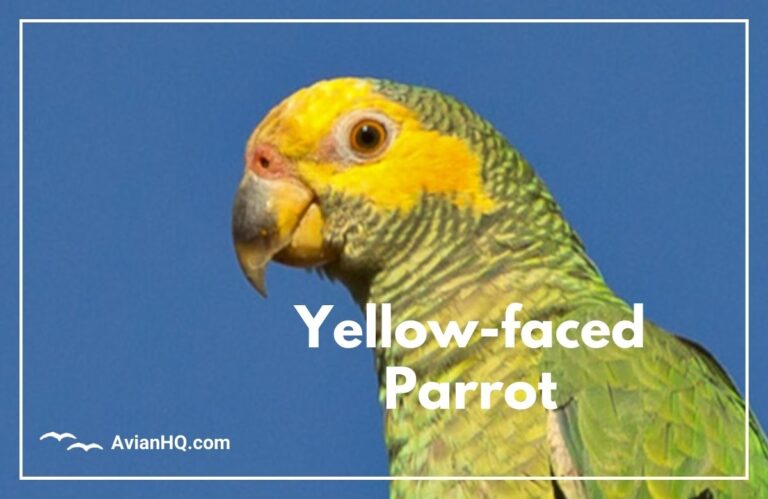Genus: Alipiopsitta
Parrots are some of the most recognizable and charming birds, known for their bright plumage and playful personalities. As you explore the diverse world of parrots, you come across the genus Alipiopsitta, a group of small to medium sized parrots native to South America.
“Alipiopsitta parrots stand out with their striking facial patterns and endangered status. Learning about them educates us on protecting rare species.”
Getting to Know Alipiopsitta
The Alipiopsitta genus contains one parrot specie found primarily in northeastern South America:
You can identify members of this genus by:
- Bright facial markings in shades of yellow, orange, or red
- Green bodies with variations of blue or reddish tones
- Short, squared off tails
- Small to medium sizes – Lengths between 9 to 14 inches
Alipiopsitta parrots inhabit forested regions of Venezuela, the Guianas, Brazil and Peru. Most species face loss of habitat and capture for the pet trade. As you learn about their behaviors and recognize their appealing looks, you understand why they make prized but problematic pets. Conservation efforts aim to better protect wild populations.
The Solitary Alipiopsitta
The classification of the Yellow-faced Parrot has an interesting history that led to the defining of the unique Alipiopsitta genus. Originally, the species was categorized among the large genus Amazona, the Amazon parrots. Experts later questioned this placement based on key physical differences.
In-depth taxonomic analysis of morphology, behavior, ecology and genetics was conducted by Dr. Steven Eberhard and colleagues from the American Museum of Natural History. Their 2006 research published in the Zoological Journal of the Linnean Society conclusively demonstrated the Yellow-faced Parrot’s uniqueness. The paper’s evidence supported reclassifying the species into its own newly created genus Alipiopsitta.
This reclassification emphasizes the Yellow-faced Parrot’s distinct qualities setting it apart as the sole member of the Alipiopsitta genus. Since 2006, the solitary Alipiopsitta xanthops reigns over a taxonomic group occupied by no other avian species. As the genus’s founder and lone representative, this makes the conservation of the Yellow-faced Parrot even more of a priority.
Species Spotlight: Alipiopsitta xanthops
The Yellow-faced Parrot stands out for its bright plumage accents. When glimpsing one among the treetops, your eyes instantly spot those namesake vibrant yellow patches on the face surrounding the eyes and beak.
- Size: These parrots measure 9 to 11 inches (22 to 28 cm) long.
- Coloring: Their bodies display green feathers on the back and wings, sometimes mixed with shades of blue. The belly and underside of the wings and tail show lighter green or blue hues.
- Behavior: You’ll see Yellow-faced Parrots traveling in noisy flocks, communicating constantly with a mix of squawks and whistles. They form strong pair bonds, mutual preening and sharing affectionate nuzzles.
- Range and Habitat: Coastal forests and woodlands in northeastern South America, largely found in Guyana, Suriname and French Guiana.
- Diet: Their daily menu consists of a diverse mix of seeds, fruits, berries, blossoms, buds and some insects.
- Conservation Status: Currently ranked as Least Concern, but experts consider certain isolated groups vulnerable due to deforestation and trapping for pet trade.
Why Alipiopsitta Parrots Make Great Pets
The appealing temperaments and behaviors of Alipiopsitta parrots explain their popularity as pets and companions. If considering one of these birds, take time to understand proper care and only obtain captive-bred birds through reputable breeders.
Several qualities make these parrots suitable pets:
- Intelligence – They showcase ability to learn tricks and in some cases talk using a few words or phrases
- Affectionate Nature – They bond closely with owners, seeking cuddles and preening
- Minimal Noise – Compared to larger parrots, their vocalizations remain at lower volumes
In terms of care, Alipiopsitta parrots require:
- Spacious enclosure, minimum dimensions of at least 24 x 24 x 36 inches
- Enriched environment including a variety of toys, swings, branches and activities
- Healthy diet with nuts, seeds, vegetables, fruits and pellets
- Regular vet checks for maintaining claws, wings, and beak
- Plenty of outside of cage time for exercise and mental stimulation
While beautiful and friendly companion birds, expanding the captive pet population poses risks to those vulnerable wild flocks. Support parrot conservation groups working to protect tropical habitats if considering one of alluring Alipiopsitta parrots.
Conclusion
The parrots of the Alipiopsitta genus showcase vibrant tropical beauty while facing concerning population declines. Learning about these species educates the public on protecting rare birds.
Key Takeaways
- Three Alipiopsitta species with restricted ranges in South America
- Identified by bright facial markings and green/blue bodies
- Facing habitat loss and excessive illegal capture for pets
- Their intelligence and personalities explain popularity as companion birds
- Support accredited zoos and conservation groups working to preserve wild populations
- Consider adoption if seeking an Alipiopsitta parrot as pet
While small in size, Alipiopsitta parrots leave a lasting colorful impression on those fortunate to see them in person. Their endangered status in the wild means nature lovers must act as vocal advocates for the preservation of these species and other threatened tropical birds. By spreading awareness and supporting ethical breeding and habitat programs, we play key roles in ensuring a vibrant future.


